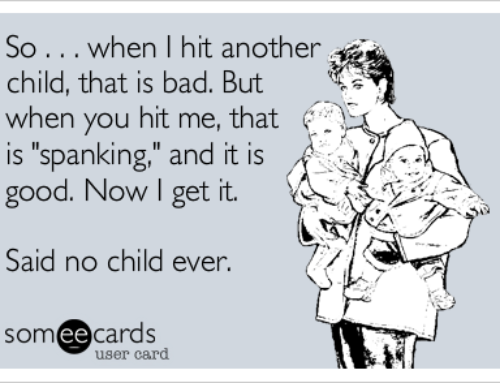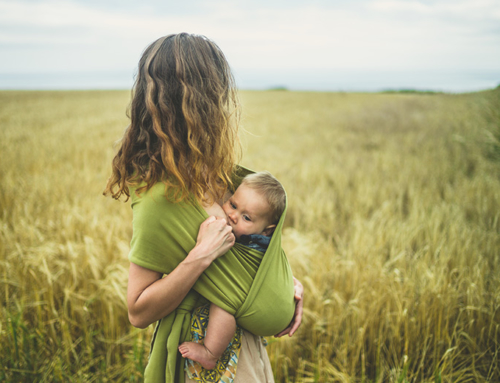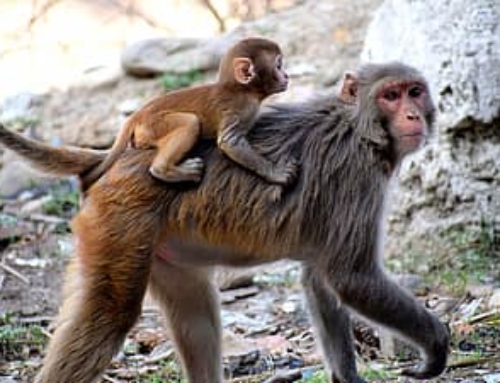By Natasha Joseph and Leah Callahan
co-founders of Attachment Parents of Lane County
Reprinted with permission
“We see it everywhere. A tired parent, at the end of a stressful day, loses it – and a child suffers. We’d like to help if we could, but we hesitate. Is it our business to intervene? And if we do, will we embarrass and antagonize the parent, imperiling the child even more? Will we make the mistake of harshly telling a parent to be gentle with her children? Isn’t it more tactful to walk past without comment? After all, none of us is a perfect parent.”
—Jan Hunt, The Natural Child Project
In July 2012, APLC leader Natasha Joseph led a support group meeting to help our group address this question for ourselves. The information presented here is a summarized resource for parents who find themselves needing to intervene on behalf of a child in a public space.
Assessment
First assess the situation: what is going on, who is involved, what information do you have, what information is missing?
Then assess yourself: where are your feelings coming from? Are you able to respond outside of anger?
Assess whether or not you are witnessing abuse or immediate physical danger to the child. If the behavior is abusive or if the child is in immediate physical danger, literature suggests you call an authority. If what you are witnessing is not technically abuse and if the child is not in immediate physical danger, yet what you are witnessing is clearly harmful, you may choose to intervene using some of the methods below.
Loving Intervention
There are many ways to intervene when one witnesses a child being treated with harm in public. It is important to note that psychological research has documented the “bystander effect”, where people assume someone else will intervene and, because most people are assuming this, often no one actually takes action. It is also important to note that whatever you do is an intervention—choosing to do nothing is in fact an action, and has the additional consequence of tacitly accepting the harmful behavior.
Literature suggests that loving intervention is the most helpful. It creates change while lowering the chance of negative consequences, like further upsetting the parent. Clinical studies also suggest that even if a parent does react negatively to the intervention, the child could have a positive experience of it. Many adults in therapy note the one time that someone was willing to stand up for them.
Offer Help. Perhaps the easiest and most effective intervention method is to simply offer some practical help. Carry some groceries, hold a child, buckle a strap.
Words of Encouragement and Empathy. Say something kind to the parent or child. Comment on their amazing patience and kindness to their child and how encouraging it is. Or relate to how your child does the behavior as well and assure them that most people “get it” and are not upset, to just take their time. Empathize with the child as well, help the parent remember how it feels to be a child by saying something to the parent or to the child about how you can relate to their emotion.
Distract the Child. Many people carry stickers or small toys with them that they can hand out to children to distract them and help de-escalate a situation where everyone is stressed out.
Distract the Adult. Approach the adult, apologize for the bad timing, and talk about something completely unrelated to the situation at hand.
Offer Information. Say something kind to the parent and then invite them to your local parenting group. Tell them about an innovative technique you used in such situations. Or offer a reminder couched in empathy, say something like, “wow, this store really should have air conditioning, whenever my kids got hot they always got a bit moody.” This reminds the parent that maybe they are also hot and need to cool off without actually telling them what to do.
Call In Someone Else. If you are at odds on how to respond, or too angry to respond helpfully, consider calling for help. Perhaps a friend can walk with you through an intervention or maybe you know a really family-friendly store or park employee.
Self Care
For the Child. It is important to know if your child has witnessed something that may be emotionally heavy for them. They may become stiff and silent, visibly upset, or act out what they saw later. Know that play is a way a child acts out what they don’t understand and gains control of situations over which they otherwise have no control. Setting up safe play boundaries but allowing them to get it out can be beneficial to their emotional wellbeing. If you notice your child is upset after witnessing an incident, literature says one of the best first moves is to ensure you make them feel safe themselves. Make gentle, loving physical contact with your child and then slowly, calmly, and quietly, redirect their attention to a calm activity they may enjoy. You can talk it out later if needed, but the first thing to do is to make sure your child feels safe.
For the Adult. After witnessing events that are emotionally disturbing, it is normal to need some self care. Literature suggests you talk it out and not keep it silent. Set up boundaries for yourself and don’t allow people to tell you to ‘get over it’ or say ‘it wasn’t a big deal.’ Even if you don’t feel quite up to it, get out of the house and be around people who love and support you. The APLC community is committed to supporting each other following such interactions.
Important Reminder
We are not perfect human beings. Sometimes we react with emotion instead of with logic and that is okay. It is normal to emotionally moved when you believe a child is being harmed in some way. While we encourage everyone to come up with methods of helping that are helpful, versus an emotional reaction, we all have moments where we react with emotion and that is very okay. You are responding to a child in love, with care for them, and no one has to be perfect. It may in fact be just what was needed at the time.
For More Information
Please join our online discussion on the APLC Facebook page, or any of our regular support group meetings.
Other resources: www.naturalchild.org/articles/child_advocacy.html
Author Information
Late 2010 Natasha and Leah co-founded Attachment Parents of Lane County. Natasha is a mother of one amazing three year old daughter. Leah is a mother of two gorgeous children, a near three year old son and a new baby daughter. Both women identify as attachment parenting advocates and have a passion for building community as well as supporting parents. Sparked by her passion for human rights and attachment parenting Natasha wrote this article for a group meetup. After Natasha researched and wrote the article she passed the raw version to Leah. Leah used her skills to edit the document as well as make it reader-friendly. A team effort. The group and it’s Leaders plan to continue research and discussions about intervening on behalf of children and hope to spark others to do the same.
[Image Credit: IStock Photos]






Thanks for putting this out there. I had a really terrible experience with a relative who is very into attachment parenting (before I really understood what it was about). Her intervention was not loving, but extremely judgmental and lacked sufficient information about my circumstances to give appropriate advice. It was extremely triggering to have someone assume I would force my child to conform to rigid standards of sleeping, but she was triggered herself by her assumption that I was letting my kid cry for hours on end. I wish she had read this article (and then used the information). Instead, when I set boundaries around how I wished to communicate with her about the topic, she unfriended me on FB (because she “couldn’t handle reading posts about how I was torturing my child”) and eventually “apologized” if you can call it that, by admitting that kind of intervention shouldn’t be done with people you don’t know well – which I don’t agree with! I am glad bystanders have the courage to intervene, but as someone who was intervened with by a highly triggered individual, the advice to check in with your own emotions is definitely appropriate. She actually did have something to offer me on the topic of night time parenting, but she preferred instead to terminate the relationship. What a waste!
If there is one bit of advice I would give, it would be to be humble. Although there are definitely ways that work better with children than others, assuming that your way is the better way can be a real turn off.
As a conflict resolution educator for medical practitioners and educators, I found myself nodding in agreement with all your suggested techniques. If I can re-emphasize your point, it’s important to drop all judgment. It feels impossible, I know, but it’s essential to
know you are reaching out from your own flawed experience to another human being.
The absolute most important thing to do whenever you’re trying to intervene in a conflict is to de-escalate. If you want to know more about this, read this really excellent post explaining de-escalation as a core principle in intervention.
lauragraceweldon.com/2011/10/13/get-involved-when-its-none-of-your-business/
Thank you for this important and useful post. I’ll be sharing.
To augment, here’s a piece about why intervention is so important and how that worked in several very difficult situations.”Get Involved When It’s None of Your Business.” /lauragraceweldon.com/2011/10/13/get-involved-when-its-none-of-your-business/
I love the discussion